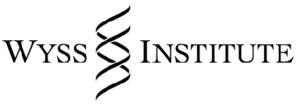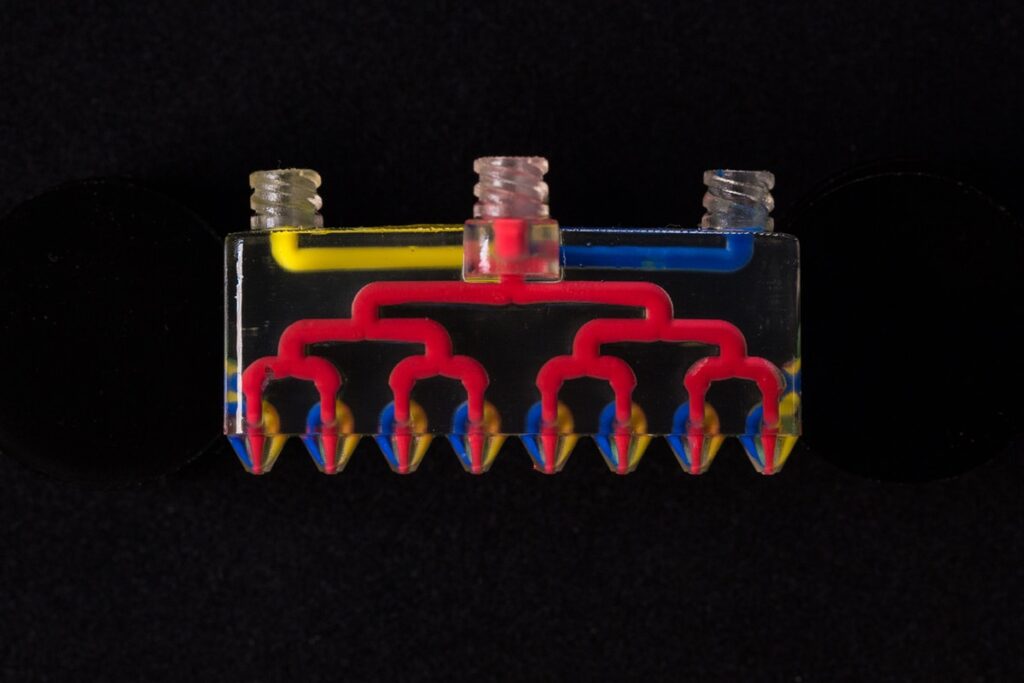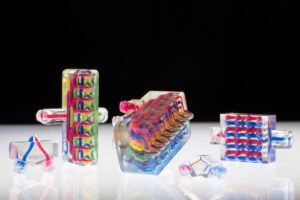 Researchers working at Harvard University‘s Wyss Institute for Biologically Inspired Engineering are quickly developing innovations to revolutionize the fields of healthcare, manufacturing, robotics and biotechnology. Just a few months back, Mark Skylar-Scott and Sébastien Uzel, researchers working in Jennifer Lewis’ Lab at the Wyss Institute and John A. Paulson School of Engineering and Applied Sciences (SEAS), created SWIFT, a breakthrough new technique that could one day provide organ tissues for therapeutic use. In October, they joined the fight against viral threats with 3D printed organ-on-chips, and earlier this week, Wyss also revealed a new diagnostic platform technology to detect a broad range of biomarkers using as little as a single drop of blood.
Researchers working at Harvard University‘s Wyss Institute for Biologically Inspired Engineering are quickly developing innovations to revolutionize the fields of healthcare, manufacturing, robotics and biotechnology. Just a few months back, Mark Skylar-Scott and Sébastien Uzel, researchers working in Jennifer Lewis’ Lab at the Wyss Institute and John A. Paulson School of Engineering and Applied Sciences (SEAS), created SWIFT, a breakthrough new technique that could one day provide organ tissues for therapeutic use. In October, they joined the fight against viral threats with 3D printed organ-on-chips, and earlier this week, Wyss also revealed a new diagnostic platform technology to detect a broad range of biomarkers using as little as a single drop of blood.
Yesterday, Wyss revealed another development – this time it is a 3D printing technique that could revolutionize the process of printing complex structures, called multimaterial multinozzle 3D (MM3D) printing. Thanks to a unique 3D printed printhead design, it allows users to seamlessly switch between multiple different materials up to 50 times per second; that’s faster than an eye can see and the time it takes for a hummingbird to beat its wings.
According to Wyss, MM3D printing uses high-speed pressure valves to achieve rapid, continuous, and seamless switching between up to eight different printing materials, enabling the creation of complex shapes in a fraction of the time currently required using printheads that range from a single nozzle to large multinozzle arrays. These 3D printheads themselves are manufactured using 3D printing, enabling their rapid customization and facilitating adoption by others in the fabrication community.

MM3D printing’s unique 3D printed printhead design (Image Credit: Wyss Institute at Harvard University)
The research, called Voxelated soft matter via multimaterial multinozzle 3D printing, was published in Nature and has Skylar-Scott again as co-first author, as well as Lewis’ Jochen Mueller, a Research Fellow at Wyss, and Claas W. Visser, an Assistant Professor at the Faculty of Mechanical Engineering of the University of Twente, in the Netherlands.
“When printing an object using a conventional extrusion-based 3D printer, the time required to print it scales cubically with the length of the object, because the printing nozzle has to move in three dimensions rather than just one,” said Skylar-Scott, a Research Associate at Wyss. “MM3D’s combination of multinozzle arrays with the ability to switch between multiple inks rapidly effectively eliminates the time lost to switching printheads and helps get the scaling law down from cubic to linear, so you can print multimaterial, periodic 3D objects much more quickly.”
The research suggests that the key to MM3D printing’s speedy ink-switching is a series of Y-shaped junctions inside the printhead where multiple ink channels come together at a single output nozzle. The shape of the nozzle, printing pressure, and ink viscosity are all precisely calculated and tuned so that when pressure is applied to one of the “arms” of the junction, the ink that flows down through that arm does not cause the static ink in the other arm to flow backwards, which prevents the inks from mixing and preserves the quality of the printed object.
By operating the printheads using a bank of fast pneumatic valves, this one-way flow behavior allows the rapid assembly of multimaterial filaments that flow continuously out from each nozzle and enables the construction of a 3D multimaterial part. The length of the ink channels can also be adjusted to account for materials that have different viscosities and yield stresses, and thus flow more quickly or slowly than other inks.
“Because MM3D printing can produce objects so quickly, one can use reactive materials whose properties change over time, such as epoxies, silicones, polyurethanes, or bioinks. One can also readily integrate materials with disparate properties to create origami-like architectures or soft robots that contain both stiff and flexible elements,” indicated Mueller.
To demonstrate their technique, the researchers fabricated a Miura origami pattern composed of stiff “panel” sections connected by highly flexible “hinge” sections. Previous methods of building such a structure require manually assembling them together into stacked layers, but the MM3D printhead was able to print the entire object in a single step by using eight nozzles to continuously extrude two alternating epoxy inks with stiffnesses differing by four orders of magnitude after being cured. The hinges withstood over 1,000 folding cycles before failing, indicating the high quality of the transitions between the stiff and flexible materials achieved during printing.
They also created a millipede-like soft robot that locomotes by coprinting multiple epoxies and silicone elastomer inks of stiffness varying by several orders of magnitude. The pattern included embedded pneumatic channels that enable the soft “muscles” to be compressed sequentially by a vacuum, making the robot “walk.” The robot was able to move at nearly half an inch per second while carrying a load eight times its own weight and could be connected to other robots to carry heavier loads.
They claim that their method substantially broadens the palette of voxelated materials that can be designed and manufactured in complex motifs. According to the scientific paper: “currently, inkjet-based 3D printing is the only widely adopted method that is capable of creating 3D voxelated materials (a voxel is a 3D pixel) with high precision, but the physics of droplet formation requires the use of low-viscosity inks to ensure successful printing.”

The printhead can accommodate multiple nozzles, each of which can print up to eight different materials
“This method enables the rapid design and fabrication of voxelated matter, which is an emerging paradigm in our field,” declared Lewis, who is a Core Faculty Member at the Wyss Institute and the Hansjörg Wyss Professor of Biologically Inspired Engineering at SEAS. “Using our broad palette of functional, structural, and biological inks, disparate materials can now be seamlessly integrated into 3D-printed objects on-demand.”
The team confirmed that current MM3D printheads can only print repeating parts, yet they envision that MM3D printing will continue to evolve, eventually featuring nozzles that can extrude different inks at different times, smaller nozzles for greater resolution, and even larger arrays for rapid, single-step 3D printing at a wide range of size and resolution scales. They are also exploring the use of sacrificial inks to create even more complex shapes.
Wyss Founding Director Donald Ingber ascertained that “3D printing is revolutionizing the manufacturing industry by allowing people to create without the need for expensive machinery and raw materials, and this new advance promises to dramatically improve the pace of innovation in this exciting area.”
The research, which was supported by the Vannevar Bush Faculty Fellowship Program through the Office of Naval Research, the National Science Foundation (Harvard MRSEC), and the GETTYLAB, is pushing the boundaries of the design and fabrication of voxelated soft matter. At this rate, Wyss Institute researchers will keep surprising us with more novel creations. What do you think they will come up with next?
Discuss this and other 3D printing topics at 3DPrintBoard.com or share your thoughts below.
[Images: Lori K. Sanders unless otherwise noted]Subscribe to Our Email Newsletter
Stay up-to-date on all the latest news from the 3D printing industry and receive information and offers from third party vendors.
You May Also Like
Gorilla Sports GE’s First 3D Printed Titanium Cast
How do you help a gorilla with a broken arm? Sounds like the start of a bad joke a zookeeper might tell, but it’s an actual dilemma recently faced by...
Nylon 3D Printed Parts Made More Functional with Coatings & Colors
Parts 3D printed from polyamide (PA, Nylon) 12 using powder bed fusion (PBF) are a mainstay in the additive manufacturing (AM) industry. While post-finishing processes have improved the porosity of...
$25M to Back Sintavia’s Largest Expansion of Metal 3D Printing Capacity Since 2019
Sintavia, the digital manufacturing company specializing in mission-critical parts for strategic sectors, announced a $25 million investment to increase its production capacity, the largest expansion to its operations since 2019....
Velo3D Initiates Public Offering in a Bid to Strengthen Financial Foundations and Drive Future Growth
Velo3D (NYSE: VLD) has been among a number of publicly traded 3D printing firms that have attempted to weather the current macroeconomic climate. After posting a challenging financial report for 2023,...































